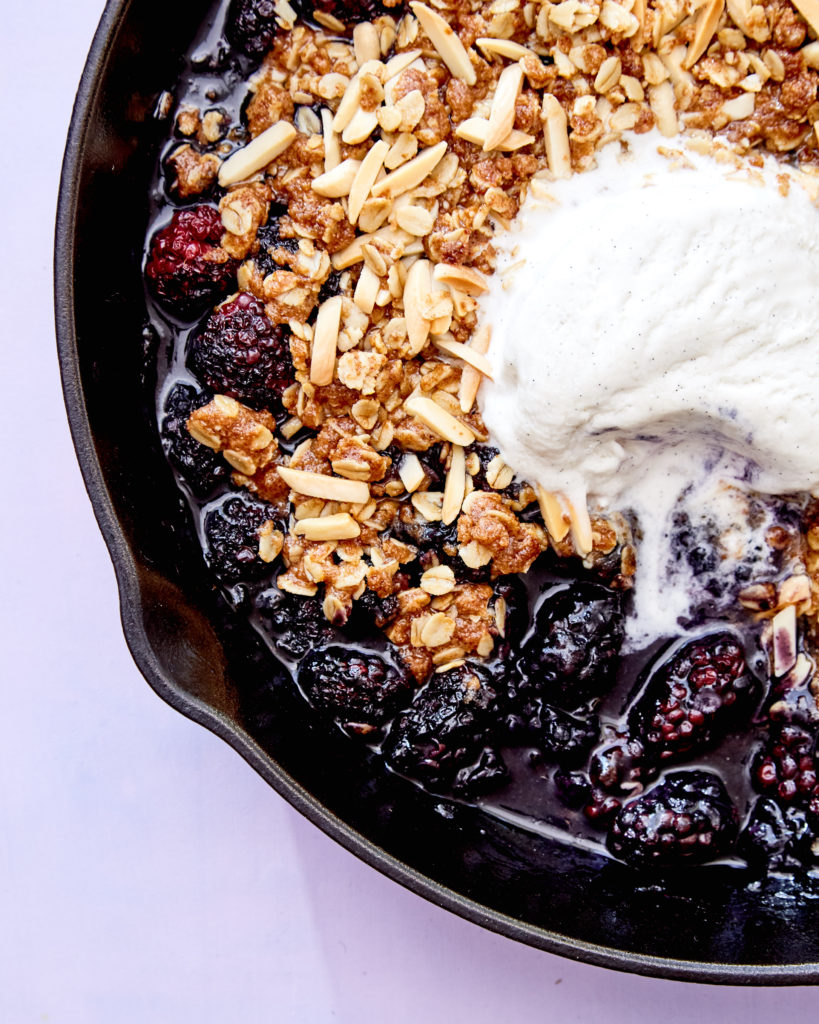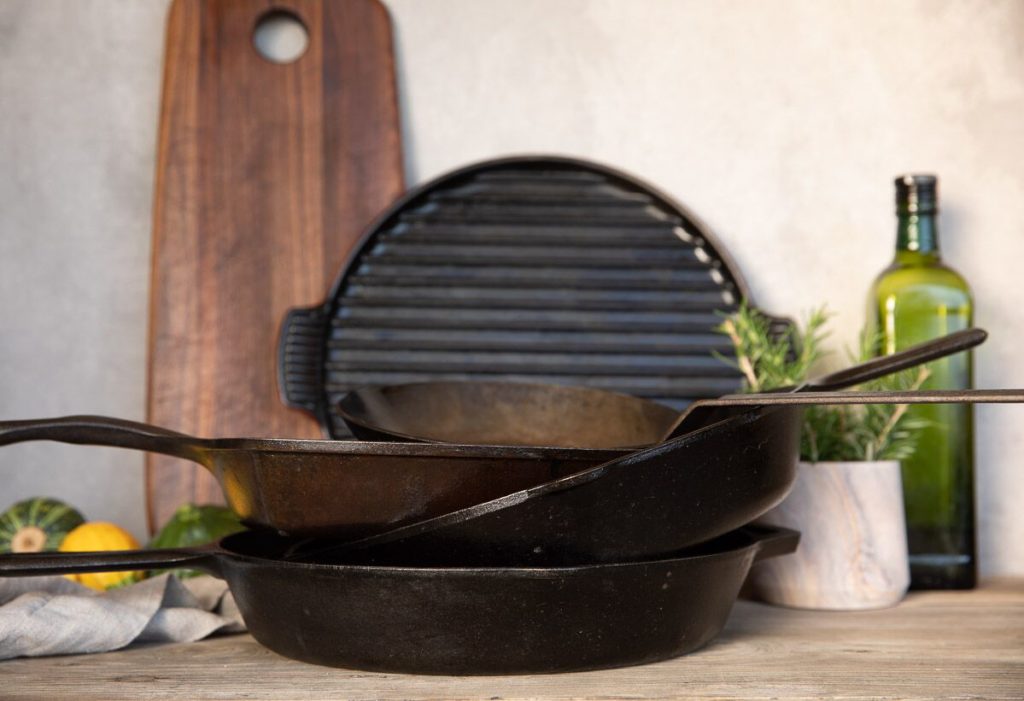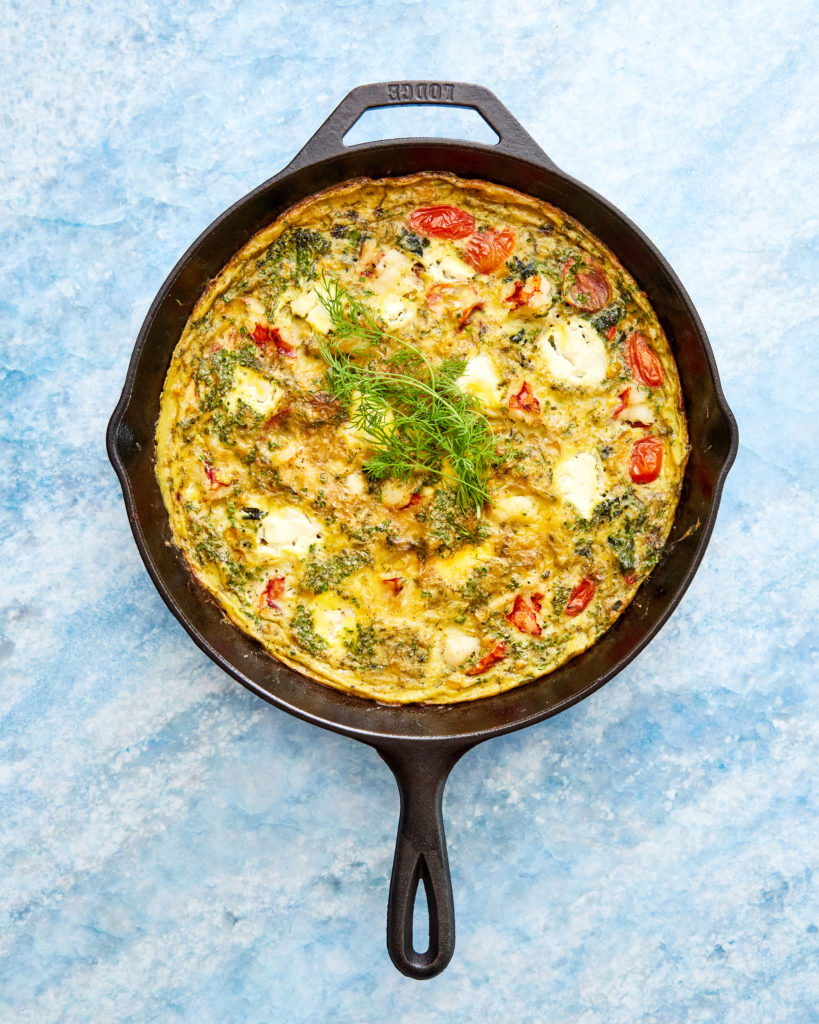Why Cast Iron
Cast iron pans have been popular cookware since before The United States of America was a thing. They’ve been a favorite from colonial kitchens to cowboy campfires to the most modern kitchens. They’re durable, versatile, and best of all, affordable. It’s the ideal cookware for any sautéed food or scramble and can go straight from the stovetop into the oven, making it the best choice for frittatas. You can even use it for baking- cast iron corn bread is a classic. A simple cast iron pan also looks beautiful sitting on your stovetop in that retro-chic kind of way.
Even though I have cupboards full of cookware, the pan I use the most by far is my trusty cast iron. A 12-inch (30-cm) cast-iron pan, once seasoned, is naturally non-stick, and can add iron to your food unlike some non-sticks which have toxic chemicals in their coating. If you’re looking to buy one, Lodge has been making reasonably priced, nearly indestructible cast iron pans in Tennessee since the 1896.
“But what about the care?” you ask, and “what is this mysterious thing called seasoning?” Though you may have heard cast iron requires a lot of TLC, don’t worry! I would never point you in the direction of high maintenance kitchenware. Keep these few simple tips in mind and you’ll have a pan you can pass on to your grandkids someday.
How to care for Cast Iron
1. Season it- Before you use a new cast iron pan for the first time, you want to make sure it’s seasoned. No, that doesn’t mean you need to throw in your favorite curry powder! When it comes to seasoning here think “a seasoned traveler” kind of seasoning. It will be adaptable, dependable and things will slide right off it’s back…or in this case, bottom. So how do you get your pan to be seasoned? Simply use a paper towel to rub it all over with a thin layer of cooking oil, then stick it in a 350* oven for an hour. That’s it! Even though most cast iron comes pre-seasoned these days, this step will give it an extra layer of protection and help with its non-stickiness.
2. Clean it- You might have heard some people say to never get your cast iron pan wet. Well, that is a totally unnecessary precaution and potentially a little gross. You can definitely wet the pan and wipe it with a sponge; or even scour it with a nylon brush. For stubborn stuck on food, you can use a generous pour of kosher salt before you scrub. Only use soap when it’s absolutely necessary. Don’t let it soak in water and never put it in the dishwasher! Like your favorite cashmere sweater this baby is hand wash only.
3. Dry it Immediately- This is the most important step to keep your pan from rusting. After you wash it put it on the stovetop over a medium-low flame to let any water evaporate. After it cools a bit, wipe it with a little more oil to keep it as shiny, black and gorgeous as geisha hair.
4. Use it early and often- The more you use your pan, the better it gets! The best way to maintain your seasoning is to cook or bake in it often. It’s pretty enough to show off, so keep it out on your stovetop so it’s always ready for action. Because there is no chemical coating to protect, feel free to use metal utensils with abandon.
5. It’s ruined forever!– Um, no, sugar plum, it’s not. Even the worst 100 year old, rusty, brown pans can be brought back to their former glory. Scrub any rust off with a stiff brush or steel wool, wash with soap and water, and re-season as directed in step 1. Good as new!

Cast Iron Photo by Camraface Food photos by Ren Fuller for Pescan: A Feel Good Cookbook by Abbie Cornish & Jacqueline King Schiller available from Abrams Books.



Thank you for the great info. I’ve always wanted a cast iron pan but was scared I would just ruin it. I thought once it had rust it was a throw away!
I also had no idea what seasoning meant. I’m ready to go out and by a Lodge! Or, maybe Santa will bring me Ine!
They’re the best and last forever!